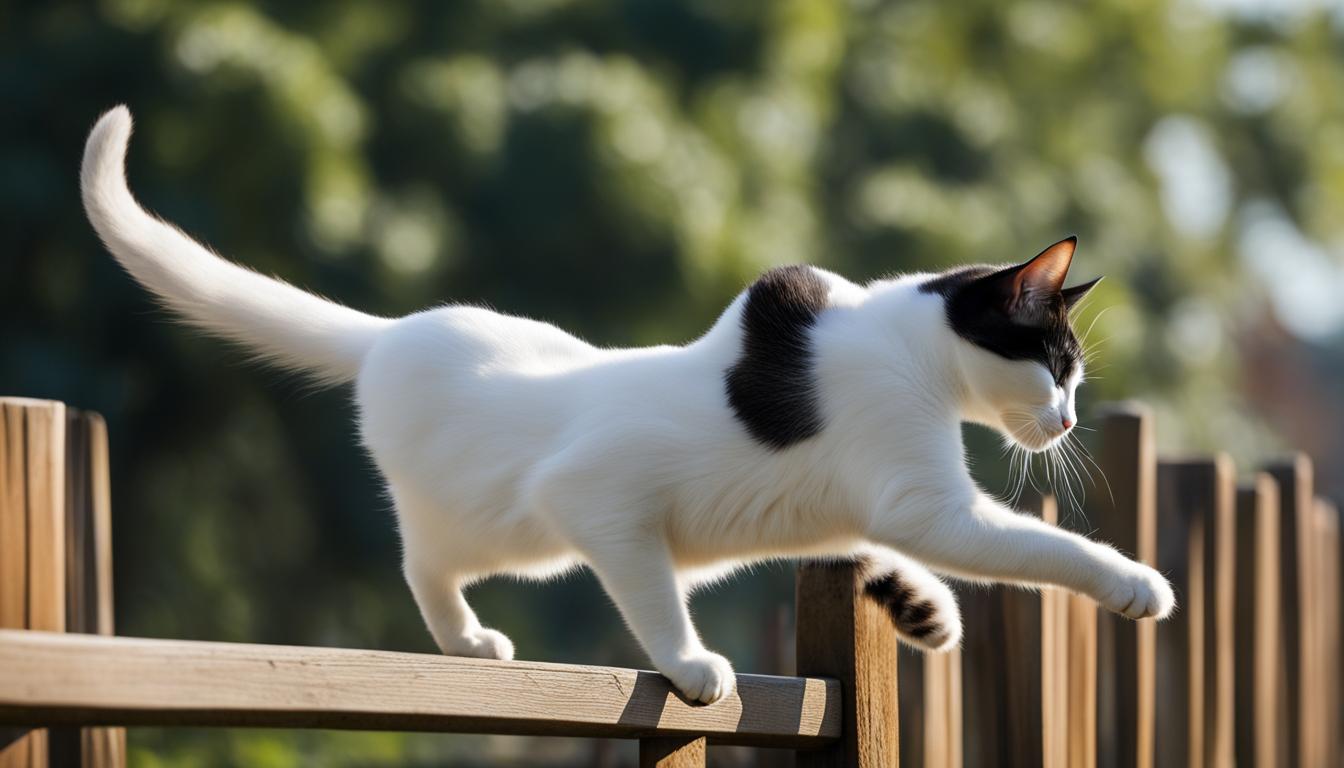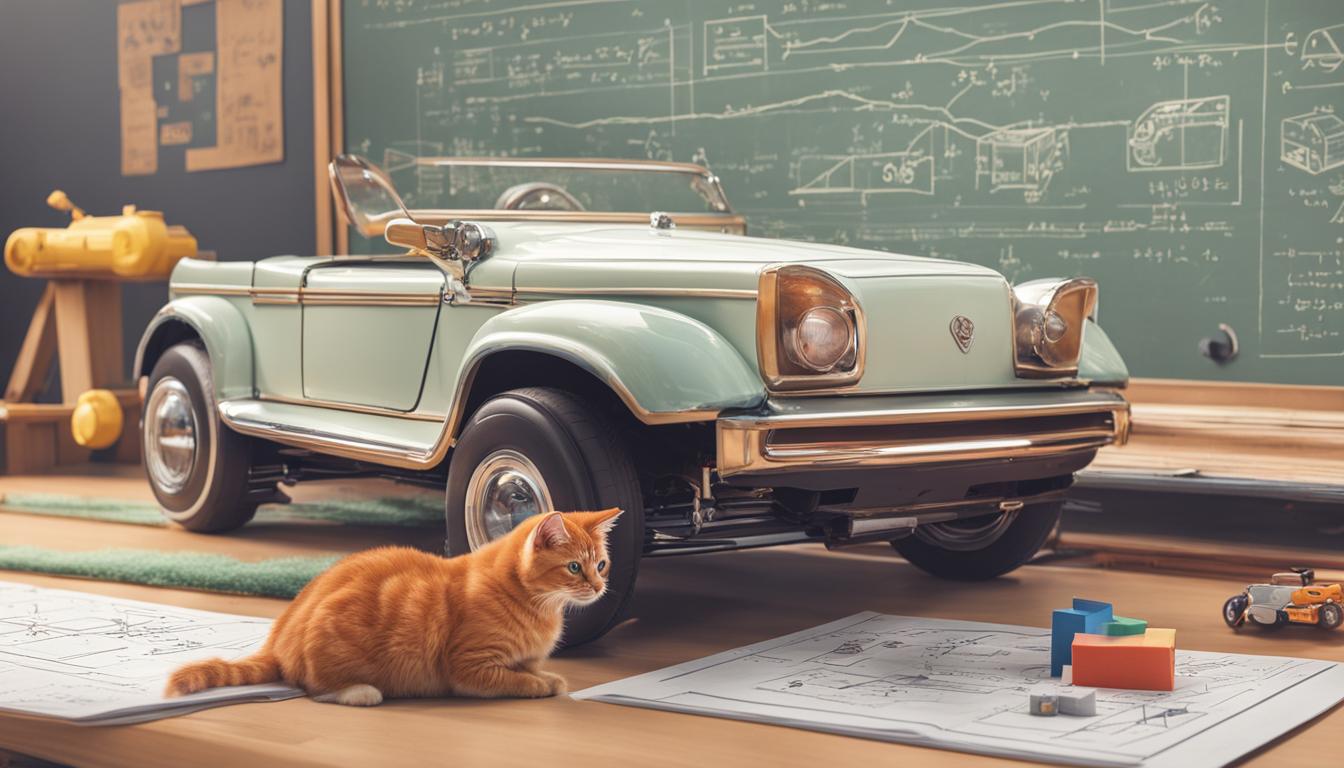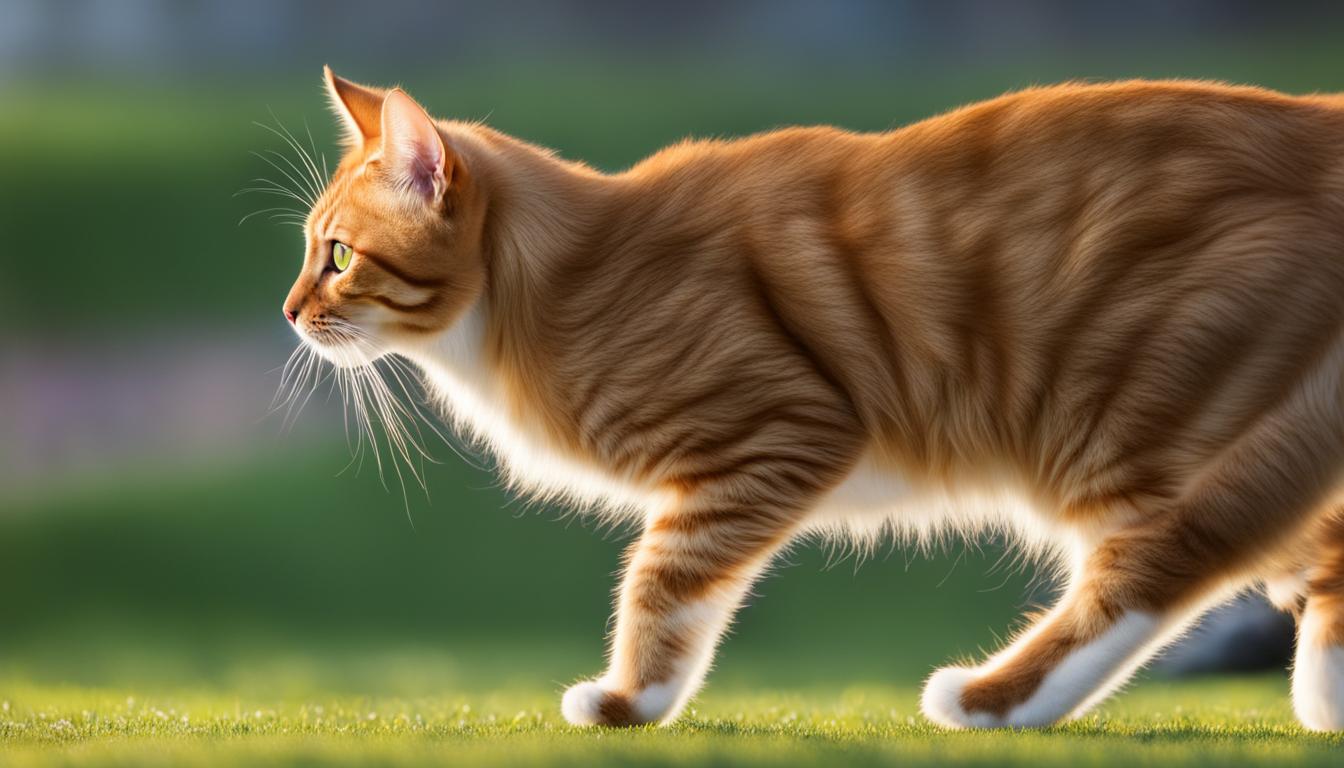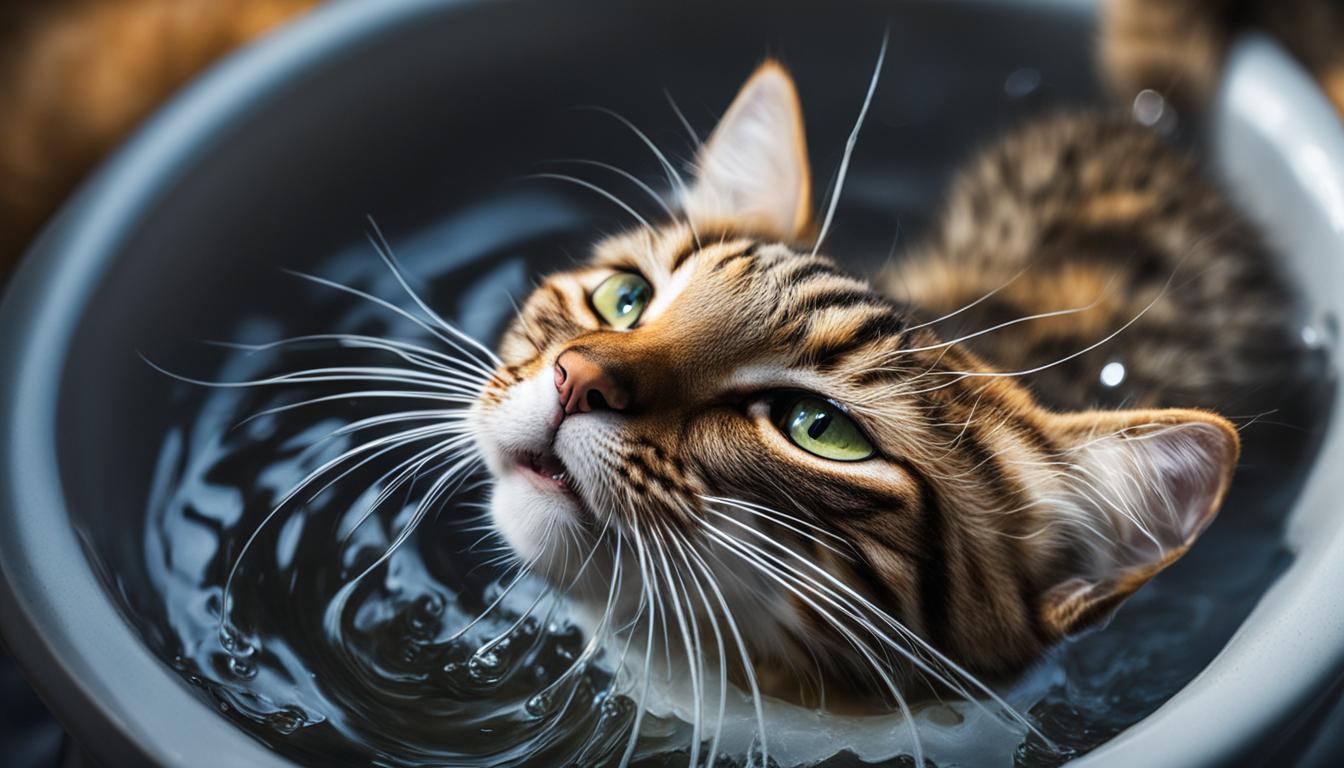As a cat owner, I’ve always been fascinated by their incredible agility and grace, especially when it comes to their landings. Have you ever wondered how cats manage to land so effortlessly from high places without getting hurt? Well, it all boils down to the remarkable biomechanics of their landing technique, which involves their soft paws and flexible spines.
Jumping is a crucial locomotion strategy for animals, allowing them to navigate challenging terrains and escape predators. Cats have mastered the art of jumping, and their ability to perform agile landings is truly awe-inspiring. Let’s dive into the fascinating world of a cat’s landing and explore how their soft paws and flexible spines contribute to their remarkable agility and injury avoidance.
Key Takeaways:
- Cats’ paw pads act as shock absorbers, helping them land softly and prevent injuries.
- The flexible spine of cats allows them to distribute the impact of landing evenly, reducing the strain on their joints and bones.
- Cats’ landing abilities can be influenced by factors such as age and training, but with proper care and conditioning, they can maintain their agility and prevent injuries throughout their lives.
- Understanding the biomechanics of a cat’s landing can inspire the development of bioinspired jumping robots and innovative technologies.
Anatomy of a Cat’s Paw Pads: The Secret to Soft Landings
Cats’ paw pads are fascinating structures that contribute to their remarkable landing technique. These specialized anatomical features play a crucial role in enabling cats to land softly and prevent injuries. The unique cushions of their paw pads act as exceptional shock absorbers, effectively dissipating the impact of their landing. This shock absorption mechanism reduces the strain on their joints and bones, allowing them to execute graceful and injury-free landings, even from great heights.
The soft texture of cats’ paw pads also provides them with additional grip and traction during landing. This enables them to maintain stability and secure footing, even on slippery or uneven surfaces. The combination of shock absorption and improved stability afforded by their paw pads allows cats to navigate various terrains with agility and precision. It’s truly remarkable how the anatomy of their paw pads contributes to their ability to perform impressive and safe landings.
Furthermore, cats’ paw pads are equipped with numerous nerve endings that enhance their sensory perception. These nerve endings provide cats with essential feedback about their environment, allowing them to make split-second adjustments to their landing positions. This sensory input enables them to calculate the optimal angles and positioning needed to achieve a safe landing. The interplay between the anatomy of their paw pads and their sophisticated landing technique is a testament to the intricate design and functionality of these remarkable feline companions.

Table: Comparing the Flexibility and Balance of Cat’s Spine
| Species | Spine Flexibility | Landing Stability |
|---|---|---|
| Cat | Highly flexible | Excellent |
| Dog | Moderately flexible | Good |
| Human | Less flexible | Fair |
Factors Affecting a Cat’s Landing: Age and Training
When it comes to a cat’s landing technique, age and training play significant roles in their ability to prevent injuries and maintain agility. As cats age, their muscle strength, flexibility, and overall agility may decline, which can impact their landing abilities. Older cats may find it more challenging to absorb the impact of a landing and distribute it evenly throughout their body, increasing the risk of strain on their joints and bones.
However, proper training and conditioning can help cats of all ages improve their landing skills and minimize the chances of injury. Training exercises focused on strengthening muscles, improving balance and coordination, and enhancing overall agility can significantly contribute to a cat’s landing technique. By regularly engaging in these exercises, cats can maintain their landing stability and reduce the risk of injuries, regardless of their age.
The Benefits of Training for Injury Prevention
Training not only helps improve a cat’s landing abilities, but it also offers several additional benefits for injury prevention. Regular exercise and conditioning can help cats maintain a healthy weight, reducing the strain on their joints and promoting overall musculoskeletal health. It can also improve their coordination and body awareness, allowing them to make precise adjustments during a landing to avoid hazards or obstacles in their path.
“Training exercises focused on strengthening muscles, improving balance and coordination, and enhancing overall agility can significantly contribute to a cat’s landing technique.”
In addition to physical benefits, training can also provide mental stimulation for cats, helping to prevent behavioral problems associated with boredom or excess energy. Engaging in regular training sessions with your cat can strengthen the bond between you and provide an opportunity for mutual enjoyment and enrichment.
By considering the factors of age and training, cat owners can take proactive steps to ensure their feline companions maintain their landing abilities and prevent injuries. Regardless of their age, cats can benefit from regular training and exercise to support their overall health and well-being.
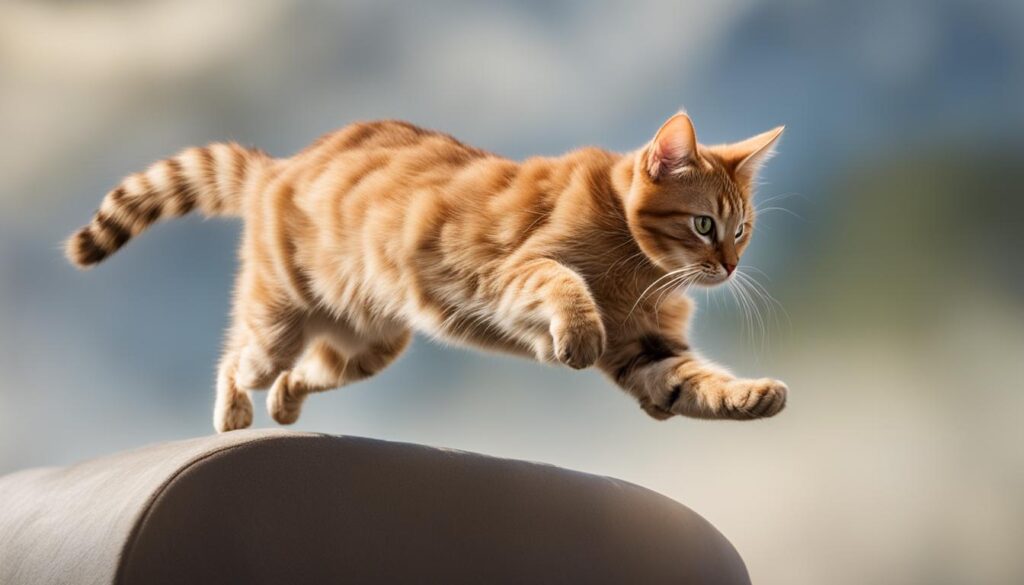
Conclusion
In conclusion, the biomechanics of a cat’s landing are a true marvel of nature. The combination of their soft paws and flexible spine allows them to execute agile and injury-free landings, even from great heights. The soft pads on their paws act as efficient shock absorbers, dissipating the landing impact and reducing strain on their joints and bones.
Moreover, a cat’s flexible spine plays a vital role in maintaining balance and stability during the landing process. This flexibility enables them to distribute the impact evenly throughout their body, minimizing the risk of injuries. Additionally, their spine allows them to make mid-air adjustments, ensuring a precise and graceful landing.
While factors such as age and training can influence a cat’s landing abilities, proper care and conditioning can help cats of all ages maintain their agility and prevent injuries. Understanding the biomechanics of a cat’s landing not only showcases the wonders of nature but also inspires innovative technologies and designs for bioinspired jumping robots.
So, the next time you witness your feline companion effortlessly leaping and landing, take a moment to appreciate the incredible interplay between their soft paws and flexible spine. It’s a beautiful example of the fascinating biomechanics that allow cats to navigate their environment with grace and precision, all while keeping injury at bay.
FAQ
What role do a cat’s paw pads play in their landing technique?
Cats’ paw pads act as shock absorbers, dissipating the impact of the landing and reducing strain on their joints and bones. They also provide additional grip and traction for stability during landing.
How does a cat’s flexible spine contribute to their landing ability?
A cat’s flexible spine allows them to absorb the impact of landing and distribute it evenly throughout their body, reducing strain on specific joints or bones. It also enables cats to adjust their body posture mid-air, ensuring a precise landing.
What factors can influence a cat’s landing ability and injury prevention?
Age is a factor that can affect a cat’s landing technique, as older cats may experience reduced muscle strength, flexibility, and agility. However, with proper training and conditioning exercises, cats of all ages can improve their landing skills and minimize the risk of injuries.

